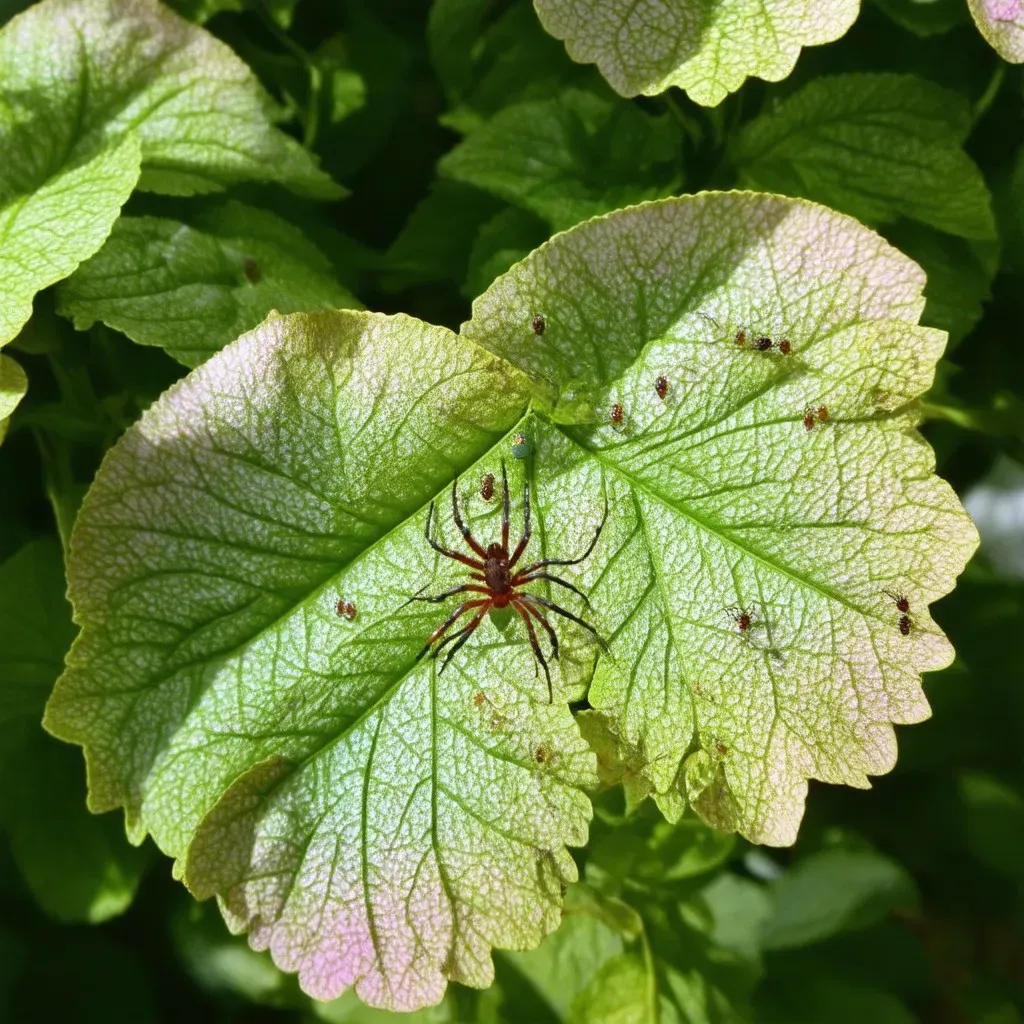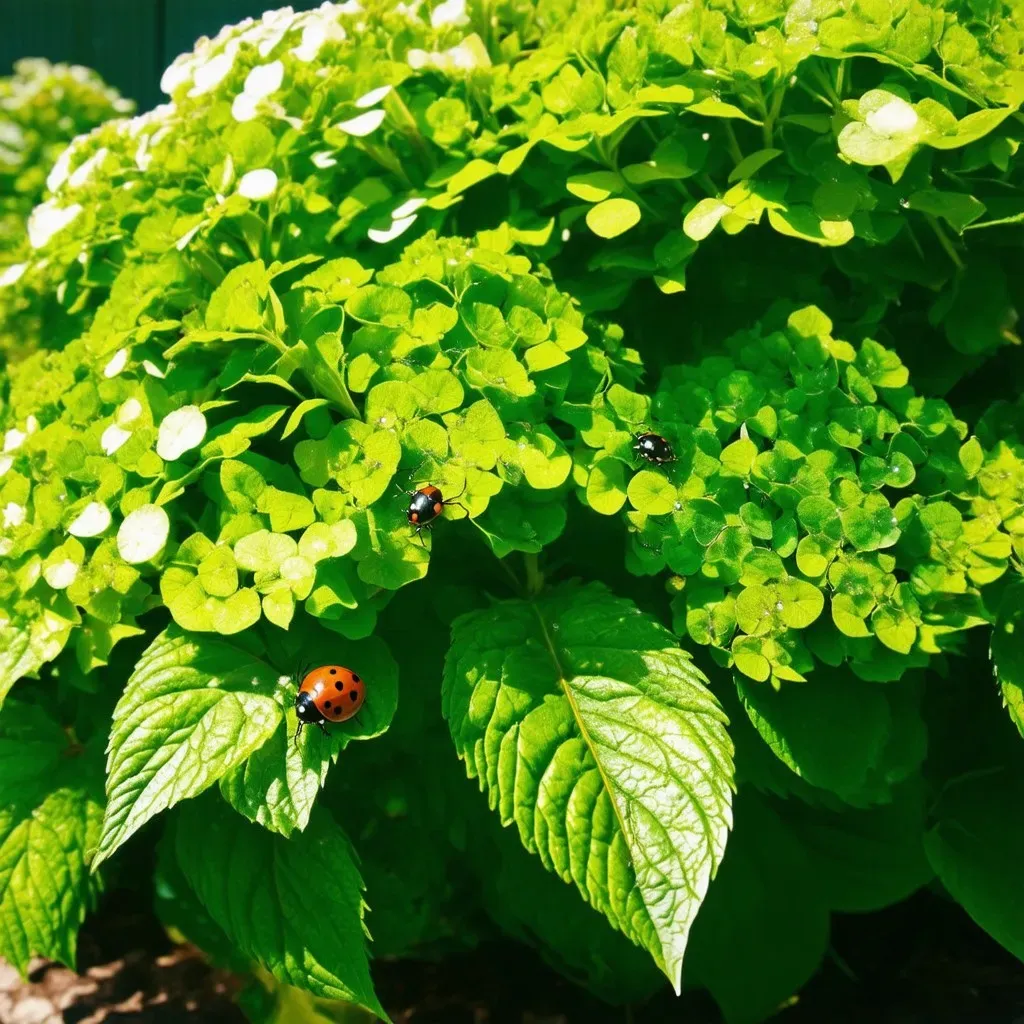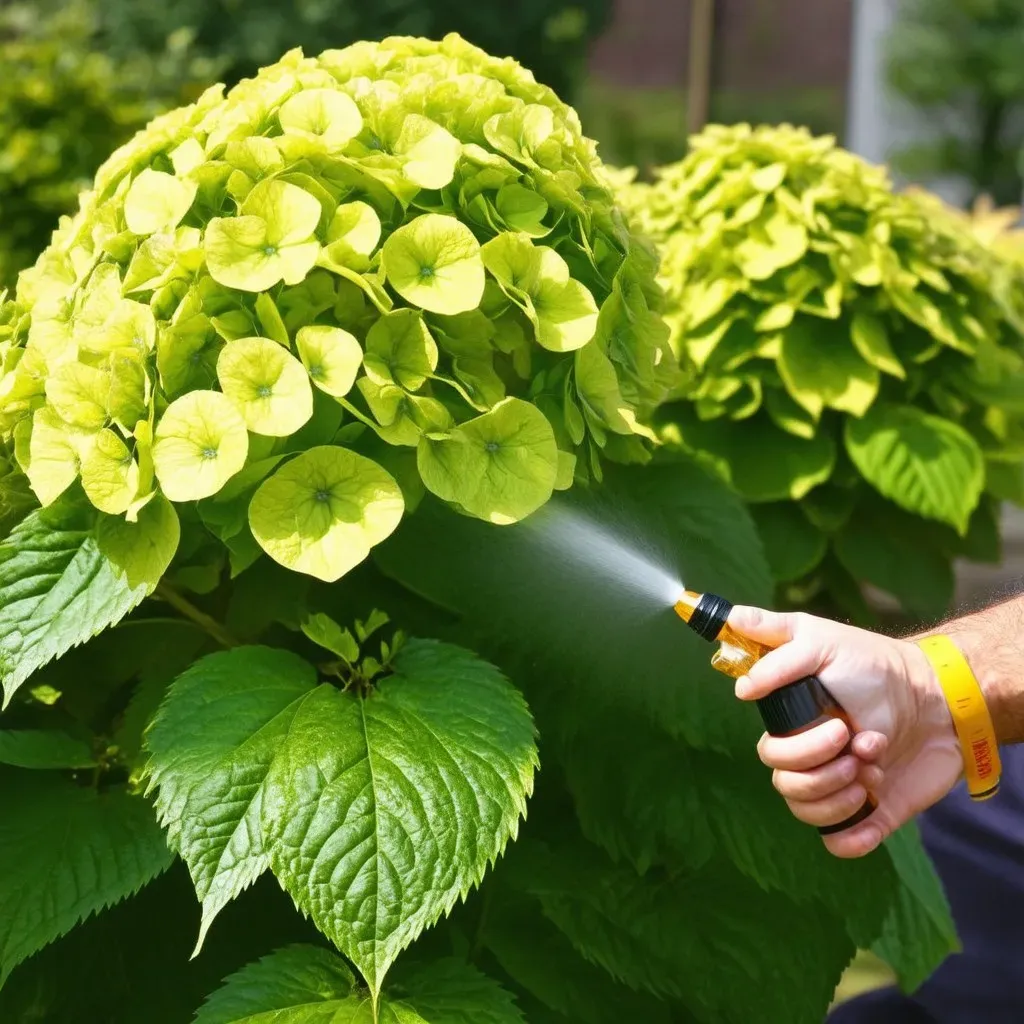Spider mites on hydrangeas can be a gardener’s nightmare. These minuscule pests, though not visible without close inspection, can wreak havoc on your beloved hydrangea plants. Infestations often go unnoticed until significant damage has been done. Therefore, understanding how to identify, prevent, and treat spider mites is crucial to maintaining the health and beauty of your hydrangeas.
Identifying Spider Mites on Hydrangea
Spider mites are tiny, eight-legged arachnids that feed on plant sap, leading to yellowing, curling, and premature leaf drop. As they thrive in hot, dry conditions, they typically appear during the summer months.
Common Symptoms of Spider Mite Infestation
- Fine Webbing: The most telling sign of spider mites is the presence of fine webbing on the undersides of leaves.
- Speckled Leaves: Check for a stippled appearance or tiny yellow dots on the leaves caused by sap feeding.
- Curling and Yellowing: Affected leaves may curl, become dry, or show signs of yellowing due to damage.
| Symptom | Description |
|---|---|
| Webbing | Fine strands of webbing visible on leaves |
| Stippled Appearance | Yellow speckles on the leaf surface |
| Curling Leaves | Leaves curling or appearing crispy and dry |
| Yellowing | Foliage fades to yellow or bronze color |

Conditions Favoring Spider Mite Infestations
Spider mites thrive under specific conditions. Here’s what to watch for:
- Hot, Dry Weather: Mites flourish in high temperatures and low humidity; therefore, dry spells are particularly favorable for their development.
- Poor Air Circulation: Dense foliage without good airflow can create a humid environment that these pests find appealing.
Facts and Figures: Spider Mites’ Lifecycle
- Lifespan: Adult spider mites can live up to four weeks.
- Reproduction: A female can lay up to 20 eggs per day, resulting in rapid population increases.
- Life Cycle Duration: Under ideal conditions, spider mites can complete their life cycle in as little as five to seven days.
| Life Stage | Duration | Description |
|---|---|---|
| Egg | 3-10 days | Tiny, round, and laid on leaf undersides |
| Larva | 3-5 days | Slightly larger than eggs, initial feeding |
| Nymph | 3-5 days | Resembles adults, growing in size |
| Adult | 5-30 days | Fully mature, capable of reproduction |
Reference Video
Preventing Spider Mite Infestations
1. Maintain Proper Watering
Keeping your hydrangeas well-watered is a fundamental preventive measure. Spider mites thrive in dry, stressed plants:
- Water deeply and regularly, especially during dry spells.
- Strive for consistent moisture without waterlogging the soil.
2. Increase Humidity
Spider mites dislike high humidity. You can naturally raise humidity levels by:
- Mist the leaves occasionally, especially in dry weather.
- Use mulch around the base of the plants to retain moisture.
3. Inspect Regularly
Regular inspections will help catch infestations early. Look for:
- Signs of webbing and stippling on the undersides of leaves.
- Unusual leaf curl or discoloration.

Treatment Options for Spider Mites on Hydrangea
If you discover spider mites, swift action is necessary to prevent serious damage. Here are effective treatments:
Homemade Solutions
- Soap Spray: Mix a tablespoon of dish soap with a gallon of water; apply directly to affected areas. The soap suffocates the mites.
- Neem Oil: Use neem oil mixed with water. Spray on plants every few days until the infestation is under control.
Chemical Treatments
- Miticides: In severe cases, you may consider commercially available miticides. However, ensure these products target spider mites specifically to avoid harming beneficial insects.
Natural Predators
Encouraging beneficial insects can also control spider mite populations naturally.
- Predatory Mites: Introduce predatory mites that feed on these pests.
- Ladybugs and Lacewings: Both can help reduce spider mite numbers significantly.

Frequently Asked Questions (FAQ)
How can I tell if my hydrangeas are suffering from spider mites?
Look for symptoms such as yellowing leaves, fine webbing, and signs of foliage curling. Regular inspections can help in early detection.
Why are spider mites particularly prevalent in the summer?
These pests thrive in hot, dry conditions. Summer months often provide the perfect environment for their reproduction.
Can spider mites kill my hydrangeas?
If not controlled, spider mites can cause significant damage to your hydrangeas, leading to leaf drop and stunted growth.
Are there any good home remedies for spider mite control?
Yes, soap and water mixtures or neem oil sprays can be effective solutions for controlling spider mite populations.
How often should I check for spider mites?
Regular weekly inspections during the growing season are advisable to catch early signs of infestation.
For more detailed information on how to manage pests like spider mites on hydrangeas, visit Rockets Garden or Epic Gardening to learn more.

By following these identification, prevention, and treatment strategies, you can effectively manage spider mites on hydrangeas and keep your blooms vibrant and healthy.


